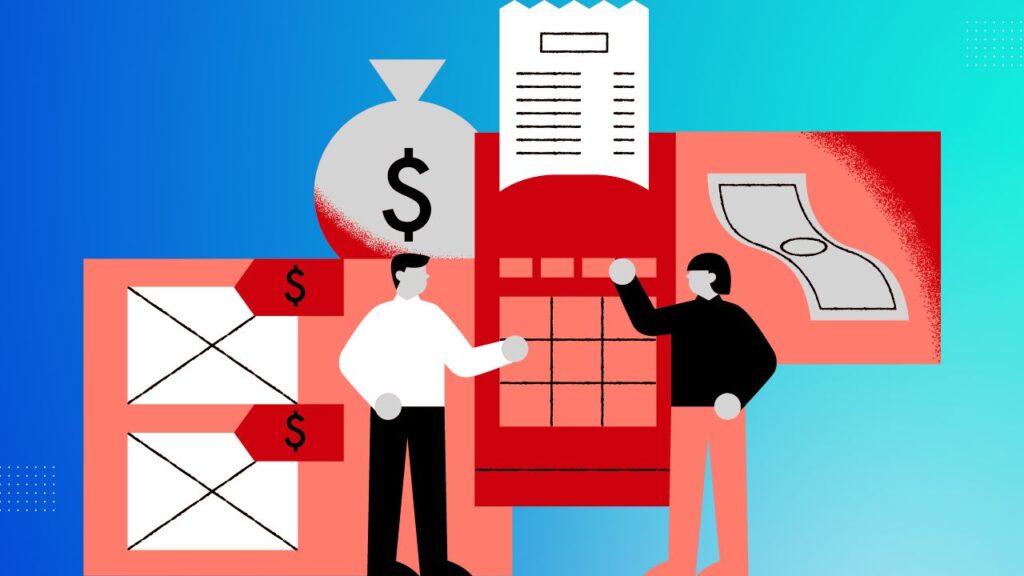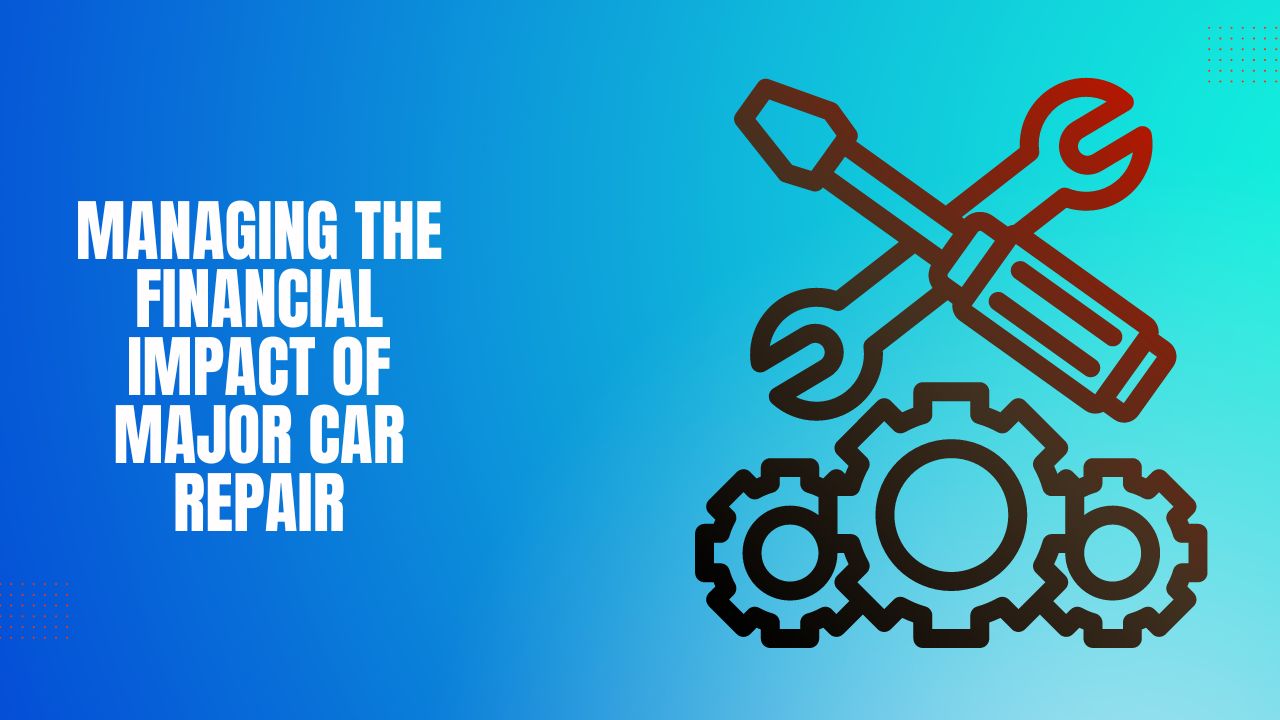Let’s talk about a topic that’s all too familiar for us millennials: managing the financial impact of a major car repair.
Picture this: you’re cruising along, minding your own business, when suddenly your trusty car decides to give you a not-so-pleasant surprise. Yep, that’s right, a major repair is on the horizon.
Now, I know firsthand how stressful and wallet-draining these situations can be.
In fact, did you know that the average cost of a major car repair in the United States is around $500 to $600?
And that’s just the average! Depending on the repair needed, it can easily skyrocket to several thousand dollars.
But we’re not here to dwell on the gloomy statistics.
Instead, we’re going to dive into the strategies and tips that can save your finances from going down the drain after a major car repair.
Because let’s face it, we millennials are known for our resourcefulness and ability to navigate tricky financial situations.
To manage the financial impact of major car repairs: 1) Create an emergency fund specifically for car-related expenses, allowing you to cover unexpected repairs without impacting your budget. 2) Regularly maintain your vehicle to catch minor issues early on, preventing them from turning into expensive repairs later. 3) Explore warranty options or extended service plans to provide additional coverage and reduce out-of-pocket expenses.
Throughout this article, we’ll explore the importance of building a solid financial safety net, understanding your insurance coverage options, negotiating repair costs like a pro, and even considering the pros and cons of DIY repairs versus professional help.
We’ll cover it all, my friend, with the ultimate goal of helping you bounce back from this financial setback stronger than ever.
So, buckle up and get ready to master the art of managing the financial impact of a major car repair.
Together, we’ll make sure your hard-earned money stays where it belongs – in your pocket, fueling your dreams and securing your financial future.
Let’s dive in!
1. Financial Impact of Major Car Repairs

1.1 Potential Costs Involved in Major Car Repairs
When it comes to major car repairs, it’s crucial to understand the potential costs that can hit your wallet.
Let’s break it down and see what factors can affect those repair bills:
1.1.1 Factors Affecting Repair Costs
| Factors | Explanation |
| Make and Model | Different cars have different parts and labor costs. |
| Severity of Damage | The extent of the damage affects the complexity of repairs. |
| Age and Condition | Older cars may require rarer or costlier parts. |
| Labor Rates | Repair costs can vary based on the local labor rates. |
| Location | Repair costs can vary by region and availability of parts. |
1.1.2 Common Types of Expensive Repairs
| Repair Type | Estimated Cost Range |
| Engine Replacement | $3,000 – $10,000+ |
| Transmission Repair | $1,500 – $5,000+ |
| Suspension System Repair | $500 – $3,000+ |
| Electrical System Repair | $200 – $2,000+ |
| Air Conditioning Repair | $100 – $1,500+ |
1.2 Immediate and Long-Term Financial Consequences
1.2.1 Short-term Impact on Budget and Savings
- Unexpected Expenses: Major car repairs can hit your budget hard, causing a sudden strain on your finances.
- Temporary Financial Setback: Repair bills may eat into your emergency fund or disrupt your regular savings contributions.
- Adjusted Spending: You may need to cut back on discretionary expenses temporarily to cover the repair costs.
1.2.2 Long-term Effects on Financial Goals and Stability
- Delayed Financial Milestones: Major car repairs can delay your progress towards other financial goals, such as saving for a down payment on a house or investing for retirement.
- Increased Debt Risk: If you don’t have sufficient savings or an emergency fund, you may be forced to rely on credit cards or loans to cover the repair expenses, potentially leading to debt accumulation.
- Impact on Vehicle Value: Frequent or costly repairs can lower the resale value of your car, affecting its long-term financial worth.
2. Building a Financial Safety Net

2.1 The Significance of Emergency Funds in Managing Car Repair Expenses
Let’s talk about the significance of having an emergency fund when it comes to managing those unexpected car repair expenses.
Trust me, it’s a game-changer!
2.1.1 Why Emergency Funds Matter
- Statistics show that 40% of Americans can’t cover an unexpected $400 expense without borrowing or selling something. Don’t be part of that statistic!
- Car repairs are one of the top unexpected expenses people face, and having an emergency fund can save you from financial stress and potential debt.
2.2 Ideal Amount for an Emergency Fund
Now, you might be wondering, “Vineet, how much should I have in my emergency fund to handle these car repair surprises?”
Great question buddy!
2.2.1 Rule of Thumb
- Financial experts generally recommend having 3 to 6 months’ worth of living expenses in your emergency fund.
- However, for car repair expenses specifically, it’s wise to have at least $1,000 to $2,000 set aside for unexpected repairs.
2.3 Strategies to Save and Build an Emergency Fund
Now that we know the importance and the ideal amount of an emergency fund, let’s explore some effective strategies to save and build that safety net of yours!
2.3.1 Budgeting Techniques for Millennials
- Create a budget and track your expenses using budgeting apps like Mint or YNAB.
- Cut back on non-essential expenses like dining out, entertainment, and subscriptions.
- Set realistic savings goals and allocate a portion of your income specifically to your emergency fund.
2.3.2 Automating Savings Through Direct Deposits
- Set up automatic transfers from your paycheck into a separate savings account designated for your emergency fund.
- By automating the process, you’re ensuring consistent contributions without the temptation to spend that money elsewhere.
2.3.3 Cutting Unnecessary Expenses and Reducing Debt
- Analyze your expenses and identify areas where you can make cuts, such as cable subscriptions, unused gym memberships, or excessive shopping.
- Use those cost savings to accelerate debt repayment, freeing up more money to allocate toward your emergency fund.
To learn more about this topic, check out my detailed article on Strategies For Building An Emergency Fund.
3. Insurance Options and Coverage

Let’s dive into the world of insurance options and coverage, specifically when it comes to car repairs.
We all know how expensive those can be, so it’s crucial to understand how insurance can help manage the financial impact.
3.1 Car insurance coverage for repairs
3.1.1 Comprehensive Coverage and Deductibles
When it comes to car insurance, comprehensive coverage is what you need to protect your vehicle against damages caused by events other than collisions.
This could include theft, vandalism, fire, or natural disasters.
Now, one important thing to consider is the deductible—the amount you need to pay out of pocket before your insurance kicks in.
Higher deductibles often result in lower premiums, but it means you’ll have to pay more in case of repairs.
3.1.2 Limitations and Exclusions
Insurance policies come with limitations and exclusions. It’s crucial to carefully read and understand these before signing up.
Some policies may exclude coverage for certain types of repairs, such as normal wear and tear or mechanical breakdowns.
Make sure you know what’s covered and what’s not to avoid any surprises down the road.
3.2 Financial Impact of different insurance options
3.2.1 Higher deductibles vs. lower premiums
Now, let’s talk about the financial impact of different insurance options.
Choosing a higher deductible can lower your monthly premiums, which can be beneficial if you’re looking to save money in the short term.
However, keep in mind that if you do need repairs, you’ll have to pay more out of pocket.
On the other hand, opting for a lower deductible means higher premiums, but it can provide more financial security when unexpected repairs arise.
3.2.2 Optional coverage for car repairs
In addition to standard coverage, some insurance companies offer optional coverage specifically tailored to car repairs.
One example is mechanical breakdown coverage, which helps cover repairs for mechanical failures not caused by accidents.
While this additional coverage may come at an extra cost, it could potentially save you a significant amount of money in the long run.
3.3 Tips for Reviewing and adjusting insurance policies
Now, let’s wrap things up with some tips for reviewing and adjusting your insurance policies:
- Regularly review your insurance policies to ensure they still meet your needs.
- Take multiple quotes from different insurance providers to compare coverage options and premiums.
- Assess your financial situation and determine what level of risk you’re comfortable with.
- Take advantage of any available discounts, such as bundling your car insurance with other policies.
- Keep track of your driving habits and any changes that may affect your insurance rates, such as moving to a different location or changing jobs.
To learn more about this topic, check out my detailed article Unbelievable Ways Millennials Can Save Money on Insurance.
4. Negotiating Repair Costs and Exploring Financing Options

Let’s talk about negotiating repair costs and exploring financing options to save your finances from a major car repair disaster.
4.1 Strategies for negotiating repair costs
4.1.1 Obtaining multiple quotes from repair shops
To get the best deal, it’s essential to shop around and obtain multiple quotes from different repair shops.
This allows you to compare prices and services offered.
By doing so, you can leverage the quotes against each other to negotiate a better price.
4.1.2 Researching fair pricing and industry standards
Knowledge is power when it comes to negotiating repair costs.
Take some time to research fair pricing and industry standards for the specific repairs your car needs.
Websites and online forums can provide valuable insights and help you determine a reasonable price range.
Armed with this information, you can negotiate confidently and ensure you’re not overpaying.
4.2 Financing Options for Car Repairs
4.2.1 Personal Loans and Lines of Credit
If you’re facing a major car repair and don’t have enough savings to cover the costs upfront, consider applying for a personal loan or line of credit.
These options provide you with a lump sum or a credit limit that you can use to finance the repairs.
Compare interest rates and terms from different lenders to find the most favorable option for your situation.
4.2.2 Credit cards with low-interest rates or promotional offers
Another financing option to consider is using a credit card with a low-interest rate or promotional offer.
Some credit cards offer zero or low-interest rates for an introductory period, which can help you spread out the cost of the repairs over time.
Just make sure to pay off the balance within the promotional period to avoid high-interest charges.
However, they generally come with interest charges and potential fees. Calculate the total cost of borrowing and determine if the monthly payments are manageable within your budget.
5. DIY Repairs vs. Professional Repairs

5.1 Analyzing the financial pros and cons of DIY repairs
When it comes to DIY repairs, there are a few things to consider in terms of cost savings versus potential risks and mistakes.
Personally, I am good with any kind of house repair and generally prefer to do them myself. Whether it is plumbing, electric work, carpentry, or gadgets around the house.
But when it comes to cars, I am a noob. I leave most of it to professionals in case I make an irreversible or costly mistake.
5.1.1 Cost Savings vs. potential risks and Mistakes
Doing repairs yourself can certainly save you some money, especially when it comes to labor costs.
According to a survey by AutoMD, you can save up to 60% on repairs by doing them yourself. That’s a substantial amount!
However, there’s a catch. If you’re not experienced or lack the necessary skills, you might end up making mistakes that could be costly to fix later on.
You could potentially damage your car further, leading to more expensive repairs down the line. So, it’s essential to weigh the cost savings against the risks involved.
5.1.2 Skill and time requirements for DIY Repairs
Before embarking on a DIY repair project, you need to evaluate your skill level.
Do you have the necessary knowledge and expertise to handle the repair? If you’re not confident, it might be best to leave it to the professionals (like me).
Additionally, consider the time investment required. DIY repairs can take a significant amount of time, especially if you’re not familiar with the process.
Time is money, and if your repair project drags on for too long, it could impact your daily routine and even your work schedule.
5.2 Considering professional repairs and their financial impact
Now, let’s discuss the financial impact of opting for professional repairs.
Here are a couple of factors to keep in mind:
5.2.1 Researching reputable mechanics and repair shops
When choosing a professional for your car repairs, it’s crucial to do your homework.
Look for reputable mechanics and repair shops in your area. Check online reviews and ask for recommendations from friends and family.
Taking the time to find a reliable professional will save you headaches and potentially prevent unnecessary expenses in the long run.
5.2.2 Comparing repair costs and warranties offered
Different repair shops may have varying costs for the same repair job. It’s wise to compare prices and obtain quotes from multiple professionals.
This way, you can ensure you’re getting a fair price for the repair work.
Moreover, inquire about warranties offered by the repair shop. A reputable shop will often provide warranties on their services and parts used.
Having a warranty in place can give you peace of mind and save you from additional expenses if something goes wrong shortly after the repair.
6. Long-Term Financial Recovery Strategies

6.1 Developing a post-repair financial recovery plan
After a major car repair, it’s crucial to develop a solid financial recovery plan. Here are a few steps to consider:
- Assess the impact: Take a look at the financial impact of the repair. How much did it set you back? This will give you a clear understanding of the recovery process ahead.
- Adjust your budget: Review your monthly budget and make necessary adjustments to accommodate the repair costs. Cut back on non-essential expenses and prioritize saving.
6.2 Rebuilding emergency funds and savings
Rebuilding your emergency funds and savings is a key part of your financial recovery plan. Consider the following:
- Set savings goals: Determine how much you want to save each month towards your emergency fund and other financial goals.
- Automate savings: Set up automatic transfers from your checking account to your savings account. This way, you won’t forget to save and it becomes a habit.
6.3 Strategies for managing ongoing maintenance and repair costs
To effectively manage ongoing maintenance and repair costs, consider the following strategies:
6.3.1 Preventive maintenance and regular servicing
Regular maintenance and servicing can help prevent major repairs down the line.
Stick to the manufacturer’s recommended maintenance schedule and address any issues promptly.
This can save you money in the long run.
6.3.2 Prioritizing repairs and budgeting accordingly
Not all repairs are urgent or require immediate attention.
Prioritize repairs based on their urgency and impact on your car’s performance and safety.
Create a budget specifically for car repairs and allocate funds accordingly.
This way, you’re prepared when repairs are needed.
Bottom Line…
I hope you found these tips on managing the financial impact of major car repairs helpful.
Remember, when it comes to personal finance, preparation is key.
By implementing these strategies, you can safeguard your finances and steer clear of a financial disaster.
As millennials, we often face unexpected expenses that can throw us off track.
But armed with the right knowledge, we can navigate these challenges and come out stronger on the other side.
According to recent research, the average car repair costs can range from $500 to $1,200, and in some cases, even more. That’s a significant chunk of change that can disrupt our financial stability if we’re not careful.
By creating an emergency fund and saving a little each month, you’ll be ready to handle any unforeseen car repairs that come your way.
Remember, it’s not a matter of if, but when, your car will need maintenance. Don’t let it catch you off guard and send your budget into a tailspin.
Additionally, considering alternative transportation options during the repair period can save you money on rental costs or commuting expenses.
Carpooling, public transportation, or even utilizing ride-sharing services can be temporary solutions that keep your wallet intact while your vehicle is in the shop.
Finally, make sure to stay on top of your car’s regular maintenance.
By performing routine inspections, addressing minor issues promptly, and keeping up with oil changes, tire rotations, and other maintenance tasks, you can prevent larger and costlier problems down the road.
Remember, the path to financial success is built on prudent decision-making and preparedness.
With these strategies in your toolkit, you’ll be well-equipped to handle any major car repair that comes your way without jeopardizing your financial future.
Stay savvy, stay prepared, and keep those finances in check!
